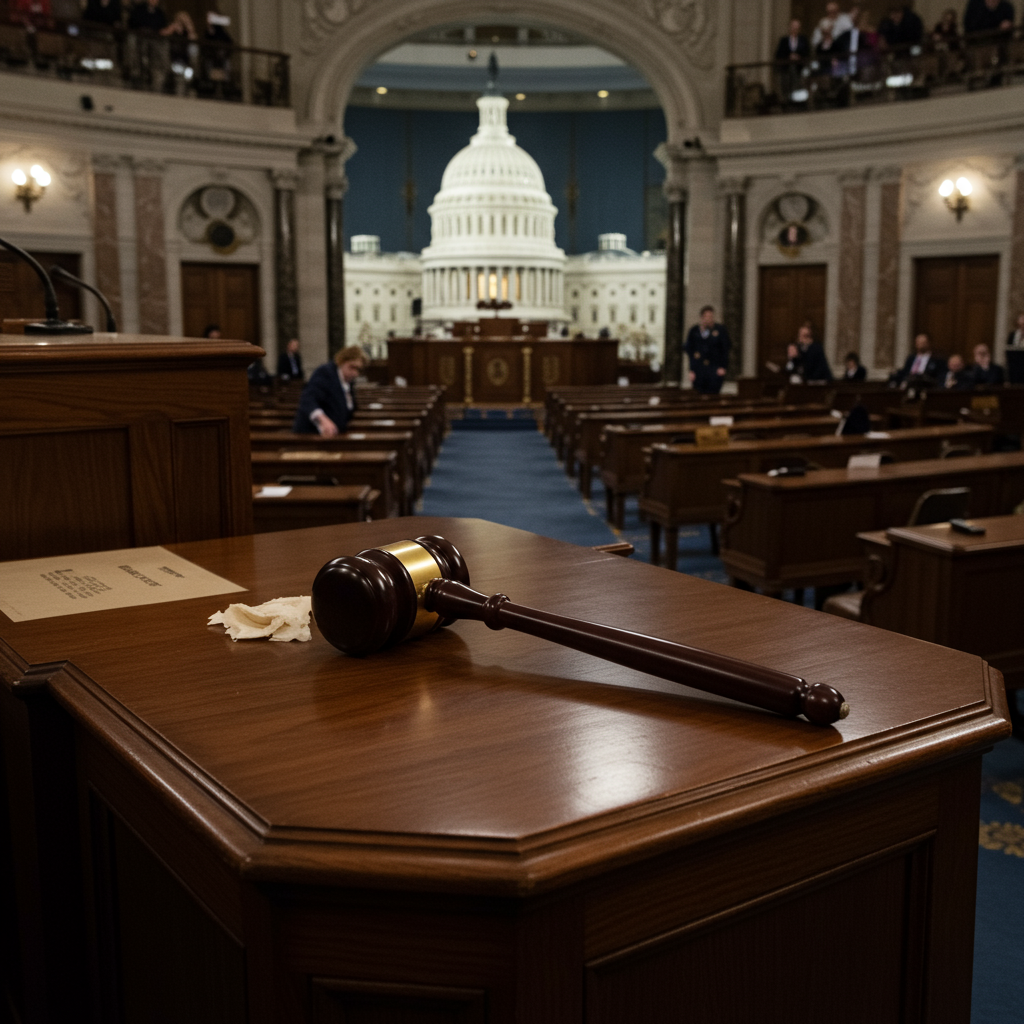Escalating Threats Prompt Urgent Calls for Enhanced Congressional Security
The recent targeted shootings of two Minnesota state lawmakers have sent shockwaves through Capitol Hill, reigniting an urgent and often tense debate over the safety of members of Congress amidst a backdrop of escalating political rhetoric and violent threats nationwide.
Following the horrific events in Minnesota, law enforcement officials, including the Capitol Police, have held a series of security briefings for congressional members. These sessions have outlined existing resources, such as the ability to use office budgets for home security systems and campaign funds for private protection. While key congressional leaders receive 24/7 Capitol Police security details, protection for other members is assigned based on active threat assessments – a system many lawmakers argue is insufficient given the current volatile climate.
Yet, these briefings and existing measures have done little to quell the deep-seated anxieties lawmakers have harbored following a string of violent attacks on American politicians over the past 15 years, including assassination attempts and the Jan. 6 riot.
“It’s scary as sh–,” one senior House lawmaker commented on the pervasive feeling among members after the Minnesota attacks. “We have had new safety and security procedures in place since Jan. 6, 2021. They include coordinating my district travel with local law enforcement. We will review those in light of the assassination in Minnesota.”
Details of the Minnesota Attack
Authorities reported that suspect Vance Boelter allegedly visited the homes of four elected officials early Saturday morning, posing as a police officer. He is accused of shooting and killing state Rep. Melissa Hortman and her husband shortly after seriously wounding state Sen. John Hoffman and his wife in a separate attack at their home. Boelter was apprehended Sunday night.
Chillingly, a list of names of Democratic officials found in Boelter’s vehicle reportedly included several members of Congress: Senators Tina Smith of Minnesota and Tammy Baldwin of Wisconsin, and Representatives Angie Craig of Minnesota, Debbie Dingell of Michigan, and Greg Landsman of Ohio.
Rep. Hillary Scholten, D-Mich., also reportedly found her name on the list and subsequently canceled a scheduled town hall meeting out of caution, stating the responsible choice was to avoid diverting additional law enforcement resources.
Lawmakers Demand More Resources
The Minnesota shootings quickly prompted House Democratic leaders, including Minority Leader Hakeem Jeffries, to press their Republican counterparts for increased support. Jeffries and Rep. Joe Morelle, the ranking member on the House Administration Committee, specifically urged Speaker Mike Johnson to boost House members’ official budgets.
Currently, many members feel their office budgets are strained, forcing them to choose between essential constituent services or allocating funds for critical security measures. Raising these budgets would require congressional approval through the annual legislative branch appropriations bill.
In a letter, Jeffries and Morelle emphasized the bipartisan nature of the issue: “While we differ in many areas related to policy and our vision for America’s future, Member safety must be an area of common ground.” They highlighted that members from both sides of the aisle have endured life-altering assassination attempts and that safety concerns have driven patriotic public servants away from Congress.
Push for Data Privacy and Increased Funding
Following the attacks, discussions have also revived regarding passing legislation similar to the 2022 law protecting judges’ personal information online, which could extend such protections to members of Congress. Sen. Amy Klobuchar, D-Minn., whose state was directly impacted, expressed hope that these “horrific murders will change the sentiment within Congress” regarding data privacy for lawmakers.
Security briefings have underscored the depth of lawmaker anxiety, particularly concerning their safety in their home districts and the easy availability of their personal information. A virtual call with House Republicans and security officials was reportedly tense, with lawmakers expressing frustration that “nothing has changed” significantly for most members compared to those with dedicated protection, despite ongoing concerns.
A Troubling Trend of Rising Threats
The heightened fear is supported by concerning statistics. Threats against members of Congress, their families, or staff have been steadily rising. The Capitol Police Threat Assessment Section investigated 9,474 concerning statements and direct threats in 2023 alone, an 18% increase from the previous year. The only year with more recorded threats was 2021, in the immediate aftermath of the Jan. 6 Capitol attack, which saw 9,625 threats.
Just recently, a 25-year-old Georgia man was arraigned on federal charges for allegedly making violent threats against Senators Ted Cruz, R-Texas, and Deb Fischer, R-Neb.
While the ideal solution of 24/7 protection for all 535 members of Congress is financially and logistically impractical – especially with Capitol Police facing recruitment and retention challenges – existing resources are seeing increased utilization. Since the Jan. 6 riot, the House sergeant at arms created a program offering members up to $10,000 for home security systems. Additionally, the Federal Election Commission permits the use of campaign funds for security expenses, including private guards and cybersecurity.
Data shows congressional campaigns are increasingly allocating funds to security. During the 2024 election cycle, House and Senate candidates spent approximately $8.5 million on security-related expenses, up from over $7.5 million in the 2022 cycle. Some top spenders include former Senator Kyrsten Sinema (I-Ariz.) at over $1.2 million and Rep. Alexandria Ocasio-Cortez (D-N.Y.) at $432,241.
Recalling Past Attacks
The current anxieties are further contextualized by a disturbing history of attacks on politicians:
In January 2011, Rep. Gabby Giffords, D-Ariz., was shot in the head during a constituent meeting, surviving but with six others killed.
In June 2017, a gunman opened fire on Republican lawmakers practicing for a charity baseball game, critically wounding Rep. Steve Scalise, R-La.
On January 6, 2021, rioters targeting members of Congress and Vice President Mike Pence stormed the U.S. Capitol.
In October 2022, Paul Pelosi, husband of then-House Speaker Nancy Pelosi, was attacked with a hammer in their San Francisco home.
- In July and September 2024, former President Donald Trump narrowly survived reported assassination attempts.
- www.nbcnews.com
- www.nbcphiladelphia.com
- www.nbcnews.com
“It clearly looks like a political assassination,” stated GOP Sen. Eric Schmitt of Missouri regarding the Minnesota shooting, calling for unity in condemning such violence.
The attacks in Minnesota serve as a stark reminder of the risks faced by elected officials at all levels and have intensified the debate on how to adequately protect them, whether through increased budgets, enhanced personal security, or legislative changes to safeguard their information, in an era of escalating political tensions.




